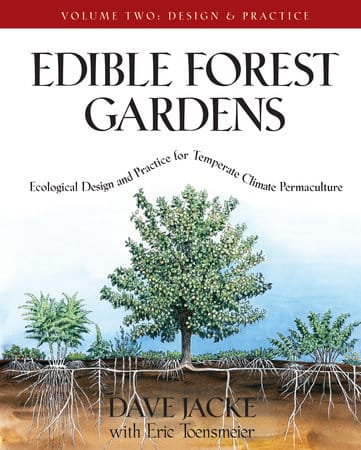Edible Forest Gardens, Volume II
Ecological Design And Practice for Temperate-Climate Permaculture

Edible Forest Gardens, Volume II
Ecological Design And Practice for Temperate-Climate Permaculture
Hardcover
$75.00
Edible Forest Gardens is a groundbreaking two-volume work that spells out and explores the key concepts of forest ecology and applies them to the needs of natural gardeners in temperate climates.
Volume I lays out the vision of the forest garden and explains the basic ecological principles that make it work. In Volume II, Dave Jacke and Eric Toensmeier move on to practical considerations: concrete ways to design, establish, and maintain your own forest garden. Along the way they present case studies and examples, as well as tables, illustrations, and a uniquely valuable “plant matrix” that lists hundreds of the best edible and useful species.
Taken together, the two volumes of Edible Forest Gardens offer an advanced course in ecological gardening–one that will forever change the way you look at plants and your environment.
Reviews & Praise
“Jacke and Toensmeier offer a radical vision for stepping out of the conceptual continuum of conventional agriculture and organic farming. . . Edible Forest Gardens is an ambitious two-volume work whose influence should extend well beyond ecologists and permaculturists and, in the best of all outcomes, reach into the mainstream. . . I have no doubt the set will be an indispensable reference for gardeners and farmers for decades.”—Patricia Jonas, Brooklyn Botanic Garden, in Plants and Gardens News
"A tree de force! A must-have set of books for anyone serious about polyculture, integrated organic garden and landscape design, permaculture in the temperate zones and, of course, food forests. The charts of condensed information alone are worth the price of admission. The best book on these topics in years Keep these books within arm's reach at all times!"—Robert Kourick, author of Designing and Maintaining Your Edible Landscape Naturally












